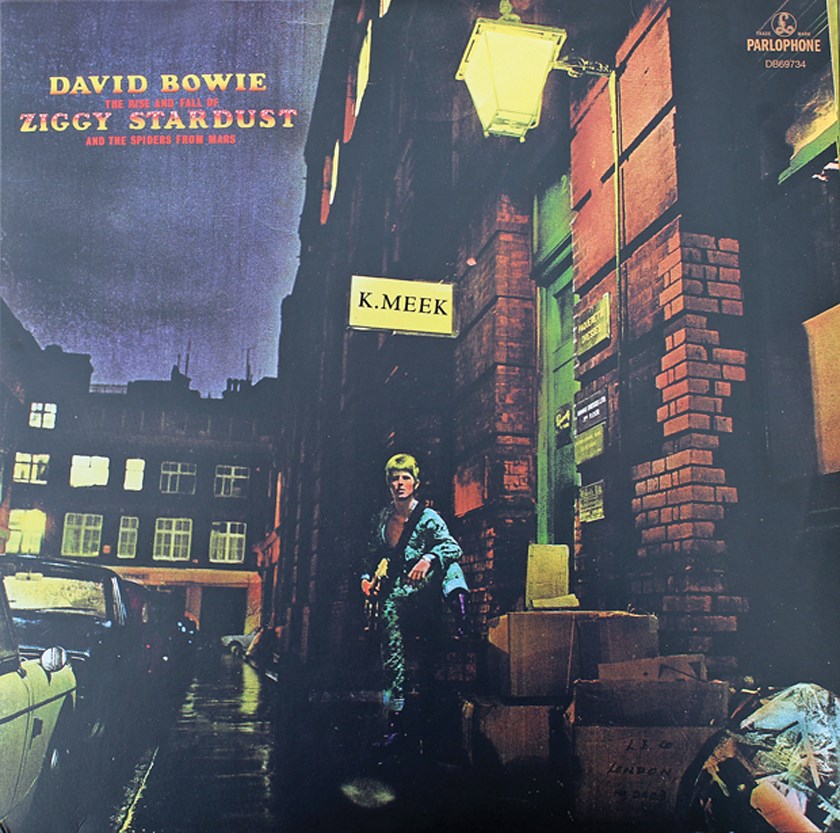The Rise and Fall of Ziggy Stardust: A Vancouver Celebration, Kay Meek Centre, Sept. 30 and Oct. 1, 8 p.m. Tickets $52 | $45 | $29. Co-presented with Cap Global Roots Series. For more information visit kaymeekcentre.com.
Ziggy Stardust was as real as rock ‘n’ roll, but he was a race of one.
While other rock stars ventured forth from places like Tupelo and Liverpool, David Bowie imagined a longer commute for the starman who fell to Earth.
More than 40 years after Bowie killed Ziggy, (the fate of the Spiders from Mars remains unknown), rock ‘n’ roll’s most famous alter ego is set for resurrection Sept. 30 and Oct. 1 at the Kay Meek Centre.
The show – more revival than retread – is orchestrated by singer, songwriter and producer Steve Dawson.
For guitar-connoisseur Dawson, (he still sports a scar from a childhood dancing accident involving a Long John Baldry record) it took a Fender Stratocaster with a slab rosewood fingerboard to lead him to Bowie’s brand of iconoclastic pop.
“There was no avoiding (‘Let’s Dance’),” he recalls. “It was a huge record.”
The early ‘80s radio staple featured guitar work from Stevie Ray Vaughan, which piqued Dawson’s interest.
He reached deeper into Bowie’s catalogue and found The Rise and Fall of Ziggy Stardust and the Spiders from Mars, an 11-track musical landscape of pomp and circumvention released in 1972.
“The hallmark is all that crazy, romping guitar stuff,” Dawson says.
But for the Kay Meek performance, most of those guitar parts will be transmuted into horns and mandolins.
While the change might “tick off a few hardcore Bowie fans,” Dawson explains the concert isn’t a tribute act.
“While we are paying tribute to Bowie, we’re really trying to interpret music,” he says. “We’re kind of stripping the songs down to their bare bones.”
Speaking from Nashville, Dawson describes an “instrumental western swing” version of ‘Ziggy Stardust,’ and John Reischman and Trisha Gagnon’s bluegrass-hued rendition of “Starman.”
Other tunes should have a sound like Stax R&B, he says.
“There’s a lot of layered guitars (on the album), but if you strip all the production off of what’s there, they’re kind of soul tunes.”
For Dawson, Ziggy Stardust is doubly impressive considering Bowie was only 25 when he recorded it.
“What would make you put in a bridge in a totally different key, in a totally different time signature?” Dawson asks. “But he seemed to be quite comfortable doing things like that.”
While the album’s trans-sexual soul is pure Bowie, the Ziggy character owes a debt to rockabilly cats like The Legendary Stardust Cowboy and “Brand New Cadillac” singer Vince Taylor
There were stories about Taylor, that in the mid-1960s he once eschewed his customary black leather for white robes, which he deemed the proper attire for telling his audience he was the son of God. In terms of public relations it was a misstep. But Bowie grokked something else, something new, something that wasn’t boring: the rock star as messiah.
Taylor and Bowie met, according to several accounts. One imagines the Thin White Duke standing quiet and bemused as Taylor unfolded a roadmap, pointing out landing sites to be used by flying saucers.
From that encounter, Bowie’s alien life form took form. Ziggy would have a screwed down hairdo coloured bright orange; like lava streaming down a Kentucky waterfall. And
Bowie’s brother from another planet would have a face tanned snow white except for the Kabuki theatre lightning bolt facepaint.
For his audience, Ziggy chose to perform for the inhabitants of a doomed world, one with only five years before extinction.
The loose conceptual album runs from “Five Years” to “Starman” to the climactic “Rock ‘n’ Roll Suicide.”
While Dawson didn’t mind the album’s theatrical bent, he says it was “good songwriting and good production” that compelled him.
The tribute to the Leper Messiah is an encore to last year’s salute to late-‘60s Rolling Stones show.
Candidates for this year’s tribute included The Band and The Byrds, but Dawson liked the idea of playing music that would be “a bit more of a stretch.”
“When he died … it was a no-brainer that now would be a good time to pay tribute to his music.”
The cast of musicians is slated to include Alex Cuba, Jim Byrnes, Ralph Shaw, Khari McClelland, Dustin Bentall, Rich Hope, and Keri Latimer, all of whom will play the tunes with the backing of Dawson and the Black Hen House Band.
Off the Cuff Playlist: David Bowie - Inventing Ziggy Stardust



